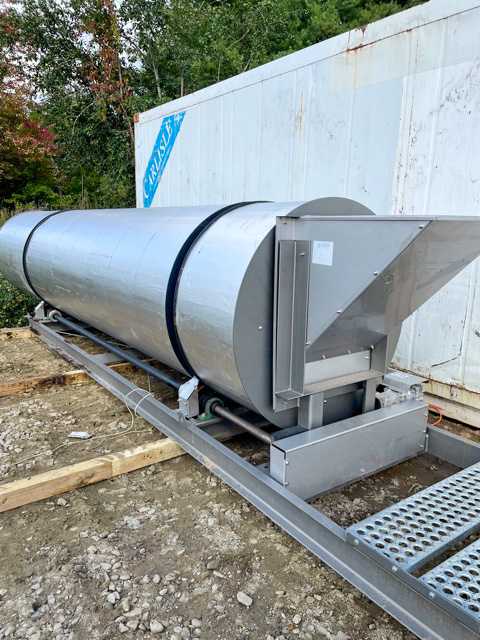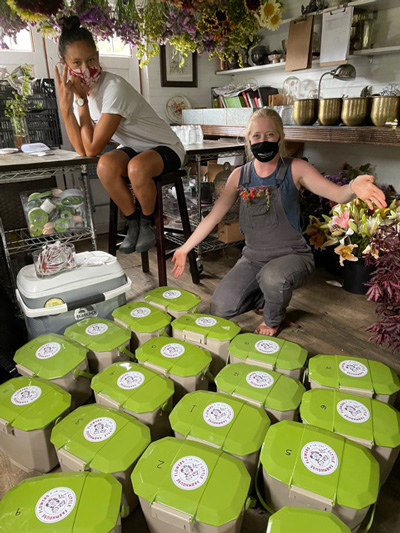Little Farmhouse Flowers
Creating a Composting System for Farm and Community

Creating a composting system for farm and community
When Linda D’Arco launched Little Farmhouse Flowers in the northern Adirondacks in 2016, she discovered that growing flowers for bouquets produced a considerable amount of green waste: weeds, leaves cut from stems, and remains of potted plants.
While workers were composting the waste, the process wasn’t producing a byproduct that could be used on the farm. “We had generated some pretty large piles of compost ourselves, but we weren’t able to manage them properly,” said D’Arco. “We weren’t getting high enough temperatures that would kill off the weed seeds and soil pathogens.”
This was when D’Arco set out to purchase a 20-foot-long rotary drum composter for the 2.5-acre farm in Jay, New York. Estimated at a cost of $38,000, she anticipated a three-year payment schedule.
In order to offset the initial debt burden, D’Arco applied for a grant from the Food Waste Reduction and Diversion Reimbursement Program managed by the New York State Pollution Prevention Institute (NYSP2I) at Rochester Institute of Technology (RIT). Her application was successful and she was able to offset $17,000 of the total investment.
In addition to the New York State funding, D’Arco raised $7,000 through a customer-driven fundraising campaign.
“It’s already paid us back so we’ve already been able to recoup the savings,” D’Arco said.

Helping her customers compost
After the farm purchased the composter in 2021, it began collecting food scraps from customers to process. While delivering flower bouquets to about 60 residents each week, farm workers picked up their food scraps for free.
Residents in the community who were not customers also began dropping off their food scraps at the farm. And even though the farm was not charging a fee for composting the food scraps, it benefitted because it used the compost as a rich soil amendment to boost flower growth.
“I know it speaks to our appreciation for having earned the grant by not charging people for this service,” D’Arco said. “There are for-profit models for composting but we want to be a flower farm first and not a food waste management company.”
Before it started composting, the farm was buying soil-less mixes made from peat to amend its field crops. That created a huge overhead because a single bale of peat costs $30–50 on average. Now, using the compost it generates onsite, the farm saves $14,000 a year, D’Arco says. The farm also uses the composted material to plant crates for tulips and lilies shipped to flower stores on the East Coast.
The composter, which produces a nutrient-rich soil amendment in 21–28 days, allows the farm to divert about 1.3 tons of organic waste from landfills each week.
D’Arco says the farm would not have been able to develop the composting operation without the grant from the food waste reimbursement program. “We would not have pursued it without help from the grant,” she said. “It’s too big of a capital expense for our little farm.”





